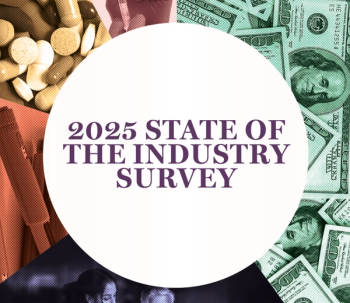
83% of Americans Unwilling to Pay More Than $100 for GLP-1s, Survey Shows
Gen Z was the age group most likely to spend the money on GLP-1 agonists; still, only 27% would.
While Americans understand the benefits of GLP-1 agonist medications, 83% of Americans are unwilling to pay more than $100 in monthly health insurance premiums for them, even if they were covered, according to the results of the recent
Willingness to pay differed across age groups. Gen Z was the most likely to pay at 27%, followed by 21% of Millennials, 14% of Gen X and just 6% of Baby Boomers, indicating a generational divide.
“I think older generations tend to only accept medications that are covered by their health insurance plans, while Gen Z and Millennials are more accustomed to paying out of pocket for non-covered expenses,” Ethan Lazarus, M.D., past president of the Obesity Medicine Association, said in an email interview with Managed Healthcare Executive. “Further, Gen Z and Millennials can look at the cost and budget for it in their monthly budget. Older generations are looking at retirement (or may have already retired) and may be less likely to work this in if they plan to retire.”
Sixty-seven percent of respondents cited weight loss as the main benefit of GLP-1s, while 56% cited diabetes management. These results underscore the growing role of GLP-1s in addressing chronic disease and preventative care.
GLP-1s were first approved in 2005 to treat type 2 diabetes but have become a popular weight loss drug, in part fueled by social media attention. Novo Nordisk launched semaglutide in 2017 under the brand name Ozempic to treat type 2 diabetes, followed by a higher dose for obesity management and marketed it as Wegovy in 2021. Insurance coverage varies for both, but Ozempic is more often covered for its type 2 diabetes indication.
However, some employers do include GLP-1 coverage for weight loss for the employees. A 2024 study found that
Approximately 1 in 8 American adults have taken a GLP-1, and approximately 2 in 5 people who have used GLP-1 said they did so to specifically lose weight, according to the results of a
“These [drugs] came to the market with a price of over $1,000 per month, and people expected insurers to cover them,” Lazarus said. “Insurers quickly realized that this cost could bankrupt them, because two-thirds of their covered adults could potentially qualify for the medication. If we put the 100 million Americans living with obesity on GLP-1 at $1,000 a month, the cost would be $1,200,000,000,000 annually.”
Without insurance, a dose of Wegovy costs approximately
The KPMG survey was conducted nationally from April 3 to April 23, 2025, and included 2,500 adults.
Newsletter
Get the latest industry news, event updates, and more from Managed healthcare Executive.






















































